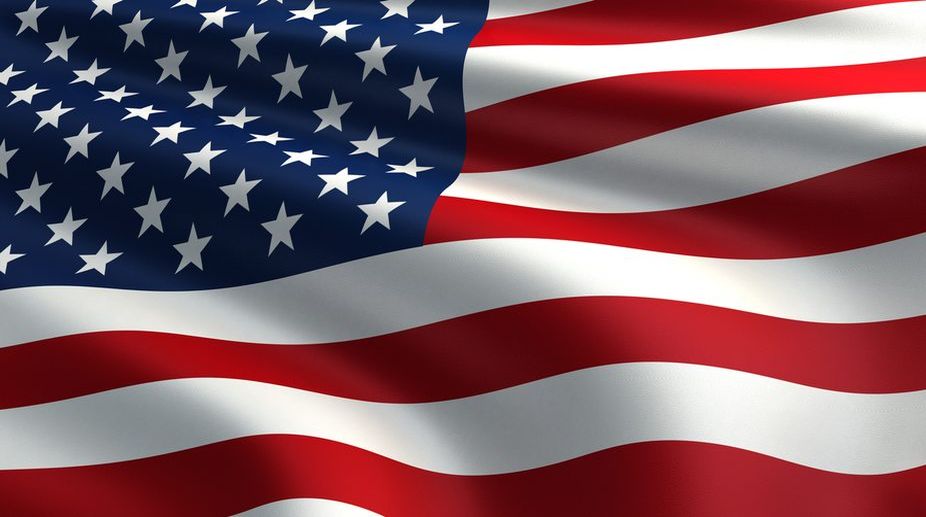The United States has become hopelessly polarised in almost every aspect of the lives of its citizens. Whether it is opinion about economy, trade, education, gay marriages, abortion, taxes, environment, military, foreign policy, illegal immigration or border security the population seems to be almost evenly divided according to their political affiliation and ideology.
An incredible amount of time and money is being spent on promoting these opposite viewpoints whether it is through organising protests and marches, filing lawsuits, campaign donations for certain candidates etc. Yet we almost never hear any leader suggesting that everyone sit down and try to find middle ground.
Advertisement
To some extent this separation always existed. The US has always had a two-party system – Republican and Democratic – and except for occasional landslide victories of one party over the other it seemed that the country maintained a balance between opposing agendas.
Overall the system worked. This is in sharp contrast to the situation in India for example where the Congress party ruled the country for decades almost as a monopoly.
Looking back, the contest between George W Bush and Al Gore in the 2000 presidential election which ended in a virtual tie was probably the beginning of a significant divide. Even though Bush united the country for a few years after the 9/11 disaster his decision to move into Iraq reopened the division.
The economic meltdown of 2008 and the resulting consequences on lives of common people made everyone more aware of the necessity of participating in the political process with vigour.
The timing was perfect for Barack Obama to take advantage of the widespread discontent and spread his liberal agenda of wealth redistribution and political correctness with pastor-like fervor and often unilaterally.
He flamed emotions about the inequalities in society – black versus white, rich versus poor, gay versus straight, Muslim versus Christian, business entrepreneurship versus government control.
The Republicans basically played the role of obstructionists. Obama silenced the socalled “silent majority” but they came back with a vengeance to support Donald Trump in 2016. Now the liberals are so distraught by Trump’s victory you cannot open a newspaper, watch TV news, listen to a late-night talk show, watch an award ceremony like the Oscars without hearing someone’s vile (and often much worse) comments about Trump. Although many people would point out that this is really an expression of disapproval and disgust about Trump.
I personally doubt that. I do not believe that the situation would change much if Trump steps down tomorrow and Mike Pence becomes the president. It seems that this political division has now extended not only to the news media but also to the judicial system (including the Supreme Court), the entertainment world, universities and even traditionally sacred bipartisan institutions like FBI, IRS and CIA.
It does not appear than there is any political leader who can unite the country in the foreseeable future. This continuing atmosphere of bitterly partisan feelings is certainly not good for the country in the global arena and also unhealthy for society. So what is the solution if any? Some political activists in California have raised the prospect of a secession of the state of California from the rest of the country.
They feel their agenda is substantially different from the rest of the country and the state can support itself with its strong economy, natural resources and educational foundation especially in high technology. This raises the question for other states such as New York, Massachusetts, Washington and Oregon; should they also think about secession? From a practical point of view a better solution could be a violation of the pledge of allegiance which states that we must have “one nation under God, indivisible…”
The country could be simply divided into two independent countries: Blue States of America (BSA) and Red States of America (RSA) if you will.
The geographical separation can be done in a relatively straightforward way by following the political preference of the majority of the residents of a given state. Clearly all the states along the west coast and most of the states in the northeast and upper midwest could be part of the BSA while the rest of the country in the middle could form the RSA! In this scenario, BSA will have two disjointed pieces – east BSA and west BSA which would be separated by the RSA in the middle.
This is no different from the British dividing up British India into India and Pakistan where Pakistan had two disjointed fragments. Of course, there would be many liberals from RSA and many conservatives from BSA who would perhaps be unhappy to live in the middle of people holding diametrically opposite views.
But most people would be content because people from middle America do not really want to move to the east or west coasts and vice versa. One can predict that such a division would lead to a demographic separation as well where the RSA would be predominately white whereas the BSA would be multi-cultural.
Since people in both parts would have overall similar cultural and economic backgrounds it could be carried out relatively smoothly unlike separations based on religion (as in creation of India/Pakistan), language (attempted separation of Canada) and extreme ideological differences (such as division of North and South Korea). It is logical to expect that the two entities would agree on some “free trade” agreement between them and the whole process could be a seamless transition.
The most serious issue could be separation of military assets which are spread out throughout the country and unlike more tangible assets like gold or oil cannot be easily divided in an equitable way.
Otherwise some NATO type treaty between the two countries could be reached to keep both protected under some common umbrella. A natural question would be how something like this can even start. It is unlikely that a major petition for a referendum would initiate the process. Will some kind of “war” be necessary to make it happen? Interestingly enough there are some similarities with the American civil war, when multiple states seceded. Secondly, one key reason for civil war was slavery and disagreement about whether it should be continued/ expanded or eliminated.
In the present climate one basic argument that divides the two camps is whether USA should be open to admitting a seemingly endless inflow of immigrants, both legal and illegal.
We can view employment of immigrants as a subtle form of slavery in the sense that most immigrants are willing to work for a lower salary than their native counterparts. This is true for IT engineers from India as well as illegal Mexicans working on farms.
Just as with the civil war, rights of the states versus federal authority is also an item of major contention in today’s politics.
The civil war started after the election of Abraham Lincoln. Now it seems that election of Donald Trump may offer a similar turning point. We are at a very interesting place in American history.
The writer, a physicist who worked in academia and industry, is a Bengali settled in America.











